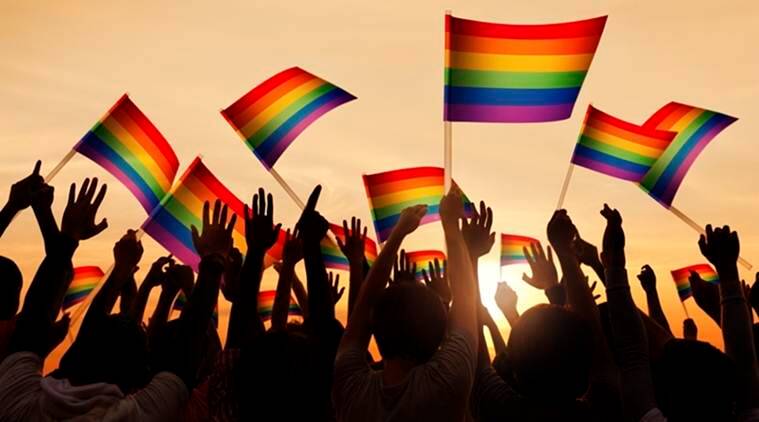Abstract
Anything that does not conform to the generally accepted social norms are disregarded or looked upon by the masses. Non-conforming (non-binary) gender identities are a representation of the above statement. Despite various reforms and interventions by States across the globe, the situation of the Transgender community remains far from what it ought to be.
Transgender is not a modern concept, it has existed since time immemorial (even with their mention in Hindu religious texts of Ramayana and Mahabharata) when they were revered as a significant part of the society. However, the need to vocalize Transgender rights has become a contemporary issue due to the degradation of their social standing over decades.
As per the Census of 2011, India recorded over 4.88 lakh people who identified as the third gender, most of whom came from the northern state of Uttar Pradesh. Notwithstanding the significant percentage of Transgenders in the population, they are subjected to inhuman treatment. Despite their constitutional recognition, a large part of society continues to defy their rights and liberties. The social stigma attached to the transgender community still persists disregarding efforts of the State and a few in civil society.
This paper attempts to examine the Constitutional recognition of Transgender Rights in India. At the same time, it tries to study the issues faced by them in society – discrimination, inadequate representation, social exclusion, limited participation in institutions and programs, violence and hate crimes, etc.
Understanding the Terminology
The term ‘Transgender’ replaced ‘Transsexual’ in the 1960s on the grounds that the latter was misleading because sexuality is different from gender identity, and transgender may be of any sexual orientation. By 1992, the International Conference on Transgender Law and Employment Policy defined transgender as an expansive umbrella term including “transsexuals, transgenderists, cross-dressers”, and anyone transitioning.
A generic definition of the term ‘Transgender’ (sometimes shortened to ‘trans’) describes it as the full range of people who identify with a different gender than the sex assigned to them at birth. The opposite of transgender is cisgender, which describes people whose gender identity matches their assigned sex. A trans person may or may not identify with the (traditional male or female) gender binary.4 Transgenders are also, sometimes, referred to as the third gender, a concept in which individuals are categorized, either by themselves or by society, as neither man nor woman. In contemporary usage, Transgender as an umbrella term, includes transmen, transwomen, transsexuals, transvestites, intersexed, and even persons with socio-cultural identities (such as kinner, hijra, aravani, jogta, etc.)
History of Transgender Rights in India
In India, people from the Transgender community are known by different names like “Hijras, Kinnar, Jogtas, Joggapas, Khusras, and Shiv shaktis”. Transgenders can be traced back to the early Vedic period (1500 BC – 500 BC) with their mention in the Vedas as — belonging to one of three separate categories, according to one’s nature or ‘prakrti’. They were classified under a larger social cohort of the ‘neutral gender’ and its members were called napumsaka meaning ‘those who do not engage in procreation.
The Hijras (or Kinnars) formed an integral part of the Islamic royal courts, particularly the Ottoman Empire and The Mughal reign in medieval India. Hijras were traditionally powerful figures in charge of collecting taxes and duties in the Sultanate and Mughal courts (Arondekar, 2010). Such social stature was, however, short-lived as British colonialism turned a respected community into a legally certified criminal tribe.
The colonial rule in India saw the beginning of a systemic legal persecution of the gender minority which carried its legacy in the post-colonial era. The British imperial administration vigorously engaged in criminalizing the very existence of the third gender in India. The Criminal Tribes Acts (the name itself suggests how the entire community was labeled criminal) of 1871, 1911, and 1924 accused the trans community of sexual deviance and homosexuality. Their social existence under the British, characterized by begging and wandering, was viewed as a public threat and thus subject to rigorous imprisonment. The colonial legislation criminalizing gender deviants, Section 377 of the Indian Penal Code (IPC) of 1861 also stood opposed to the pre-colonial tolerant attitude towards Transgenders.
Post Independence, the Criminal Tribes Act was replaced by the Indian government in 1952 with the Habitual Offenders Act. Though it revoked the colonial outlook of the trans community as legal deviants, there was no legal recognition afforded to them for decades after the independence. The colonial laws managed to shape the mindset of post-independent India which reflected in the “middle-class” gender and sexual morality. One such provision was the draconian Section 36A of the Karnataka Police Act 1963, applicable in Karnataka. This provision was a remnant of the Criminal Tribes Act 1924 and the Hyderabad Eunuchs Act 1919. When the Hyderabad Eunuchs Act was repealed, Section 36A was inserted into the Karnataka Police Act in 2011. The revival of certain aspects of the CTA, 1871 by Karnataka and Telangana shows that the colonial mindset resonates in the present.
The legal recognition of Transgenders as the third gender came after almost seven decades of our independence and is largely appreciated. However, the welfare measures and protection by the State and Central government make little difference as long as the boundaries of the gender categories are strictly policed.
Constitutional Recognition of Transgender Persons
The 2014 NALSA Judgment
Even 67 years after India gained independence, the gender identity of the Transgenders was not recognized in the eyes of the law as well as the society. It was in 2014 that the Hon’ble Supreme Court directed the government to grant legal status to Transgenders in its landmark judgment of National Legal Services Authority v. Union of India & Ors.
One of the petitioners, Laxmi Narayan Tripathy, said during the hearing that non-recognition of the identity of Hijras, a Transgender community, as a third gender, denied them the right of equality before the law and equal protection of the law guaranteed under Article 14 of the Constitution. It was also argued, by the senior council, that the right to choose one’s gender identity is integral to the right to lead a life with dignity, which is undoubtedly guaranteed by Article 21 of the Constitution of India.
The Hon’ble Supreme Court, in its verdict, recognized the third gender along with the male and female. By taking cognizance of diverse gender identities, the Court busted the dual gender structure of ‘man’ and ‘woman’ stereotyped by society. “Recognition of Transgenders as a third gender is not a social or medical issue but a human rights issue,” Justice K.S. Radhakrishnan told the Supreme Court while handing down the ruling. The judgment included directives for the legal recognition of people with non-binary gender identities and developed social welfare schemes such as reservations in State educational institutions and the public employment sector.
Decriminalization of Section 377
The case Navtej Singh Johar v. the Union of India deals with the Decriminalization of Section 377 of the Indian Penal Code (IPC). The case explored the question of the constitutional validity of Section 377 which stated – “voluntarily carnal intercourse against the order of nature with any man, woman or animal shall be punished with imprisonment for life, or with imprisonment which may extend to ten years with a fine”.
The writ petition sought the recognition of the right to sexuality, the right to sexual autonomy, and the right to choose a sexual partner to be a part of the right which is guaranteed under Article 21 of the Constitution of India. It stated that Section 377 was in clear violation of various fundamental rights under the Constitution. It was argued that Section 377 was violative of Article 14 as it was vague in the sense that it did not define “carnal intercourse against the order of nature” and there was no intelligible differentia between natural and unnatural consensual sex. Section 377 was further violative of Article 15 as it discriminates on the basis of the sex of a person’s sexual partner and it was further violative of Article 19 as it denied the right to express one’s sexual identity.
The Hon’ble Supreme Court bench, in the present case, unanimously held that Section 377 should be decriminalized and affirmed that homosexuality is not an aberration but a variation of sexuality. This decision overturned the 2013 ruling in Suresh Kumar Koushal v. Naz Foundation and found that the criminalization of sexual acts between consenting adults was a violation of Articles 14, 15, 19, and 21 of the Indian Constitution. This was a major move in favor of the entire LGBTQ+ community that was to provide further relief to sexual minorities.
Click Here To Download The Paper


📌Analysis of Bills and Acts
📌 Summary of Reports from Government Agencies
📌 Analysis of Election Manifestos

